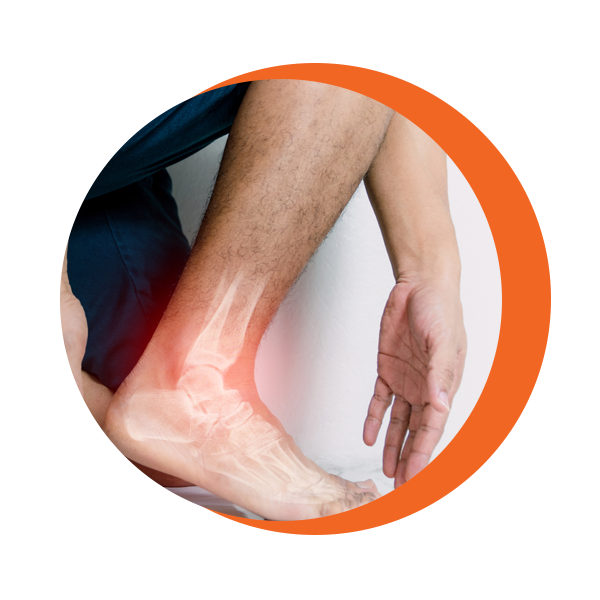Got a Foot or Ankle Injury?
This May Be Why
As integral parts of all of our daily lives, the foot and ankle are among the most commonly injured areas for athletes and active individuals. They are both highly complex structures that are essential for weight-bearing, balance and providing a wide range of mobility. Pain in the foot and ankle is relatively common and can range from minor discomfort to chronic conditions that may require treatment.


Foot & Ankle Anatomy
With 26 bones, 33 joints, 107 ligaments and 19 muscles, the complexity of the foot and ankle region makes it vulnerable to injury, resulting in over one million injuries in the United States each year.
There are three primary parts of the foot:
- Forefoot: phalanges (toes) and metatarsals
- Midfoot: bones that creates the foot’s arches
- Hindfoot: bones that form the heel and the ankle
Similarly, the ankle is made of three main bones:
- Tibia: known as the shin bone, forms the bottom part of the joint on the inside of your ankle.
- Fibula: the thin bone on the outside of your lower leg that supports the tibia.
- Talus: one of the bones in your foot that forms the lower part of the ankle joint, transferring weight from the lower leg onto the foot. This is a part of the hindfoot.
The talus is located directly above the heel bone, known as the calcaneus. These bones are joined together at the subtalar joint, which enables the foot to rotate in both dorsiflexion and plantar flexion movements.
Physical Therapy Treatments for the Foot and Ankle
Fortunately, physical therapy may reduce many of the painful symptoms associated with the foot and ankle. Whether you are an elite athlete or a weekend warrior, our certified doctors of physical therapy are ready to help you regain mobility and live pain-free.
Fill out the form below and get in contact with us today!

